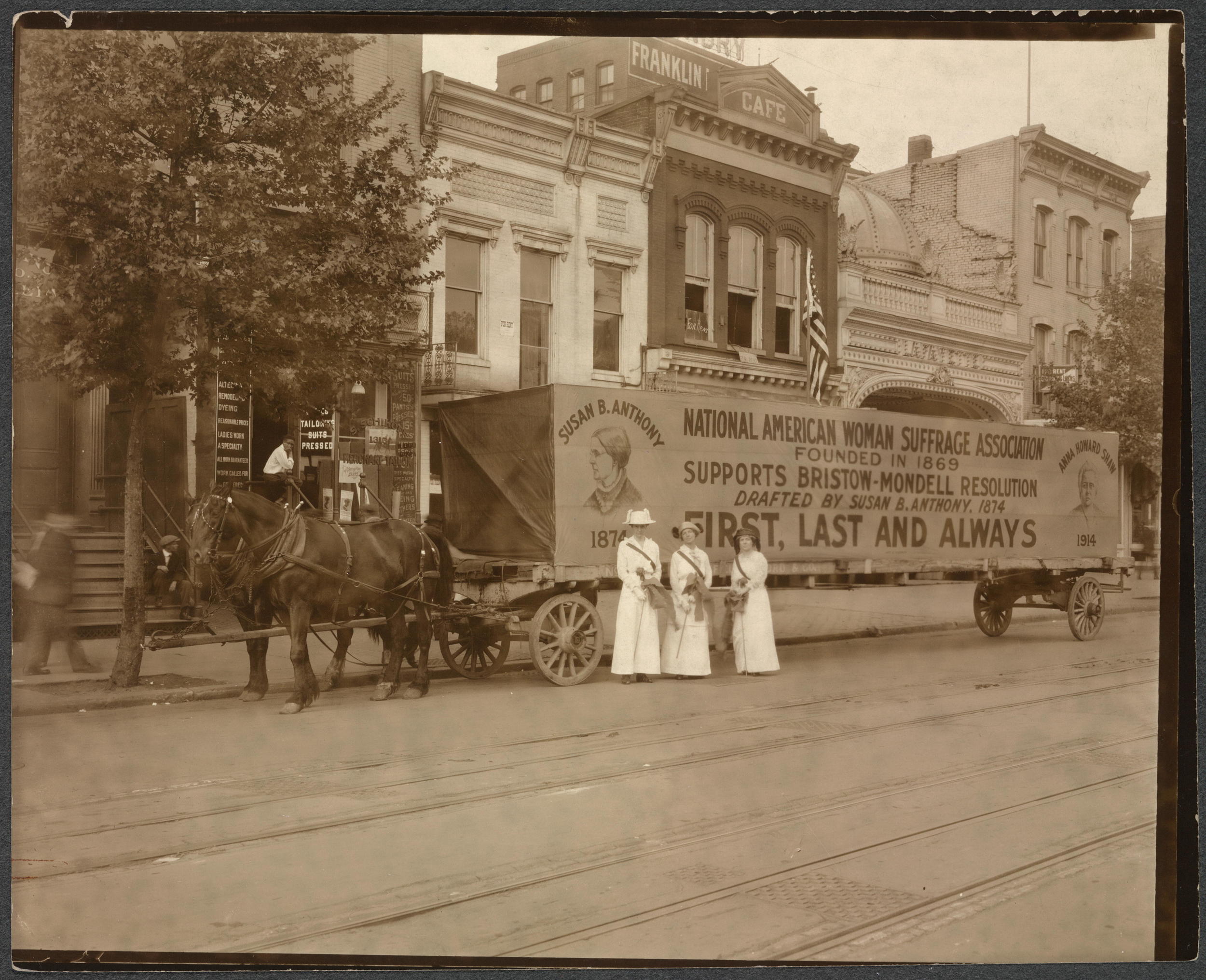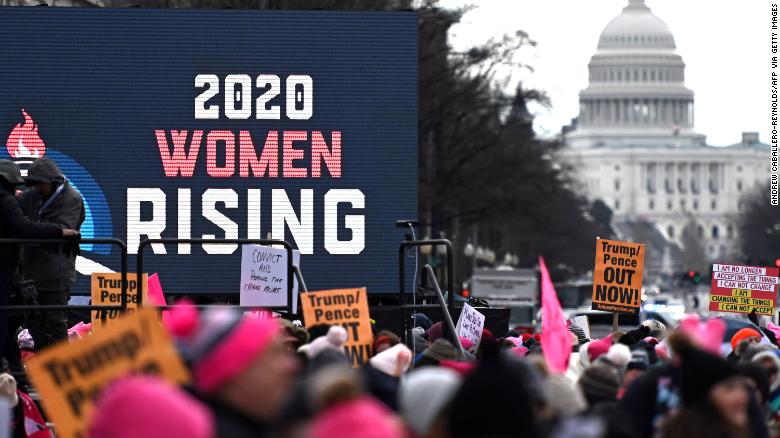Communication
Annotated Bibliography

Three women in front of a NAWSA sign, Library of Congress
Communication between suffragettes:
Alice Paul, an activist who was very involved in the British suffrage movement, returned to the United States with new ideas to share with the National American Woman Suffrage Association (NAWSA). Alice introduced the idea of a suffrage parade in Washington. By communicating with other suffragettes, she was able to raise money and organize the event. NAWSA called its members to join in Washington for the parade. Due to its large platform which reached across the country, suffragettes began making their way to Washington.
Communication from spectators:
The spectators of the parade communicated their opinions through violence and harsh comments. Their use of sexual propositions demonstrated the lack of respect they had for women. Instead of viewing the suffragettes as people, deserving of the right to vote, they viewed them as objects. The police, also being spectators, communicated their attitude to the movement by not controlling the crowd and standing by while women were attacked.

2020 Women's March, CNN
Impact:
Women had been fighting for the right to vote for over 60 years. Sadly, very little progress was made during that time. Some were starting to lose hope. Thankfully, the 1913 Parade helped to reinspire the movement by capturing the attention of the press and media. The activism that was reignited at the 1913 Parade is still strong, even after women received the right to vote in 1920. Advocating for women’s rights still continues today, as women across the globe fight for equal rights.
Next